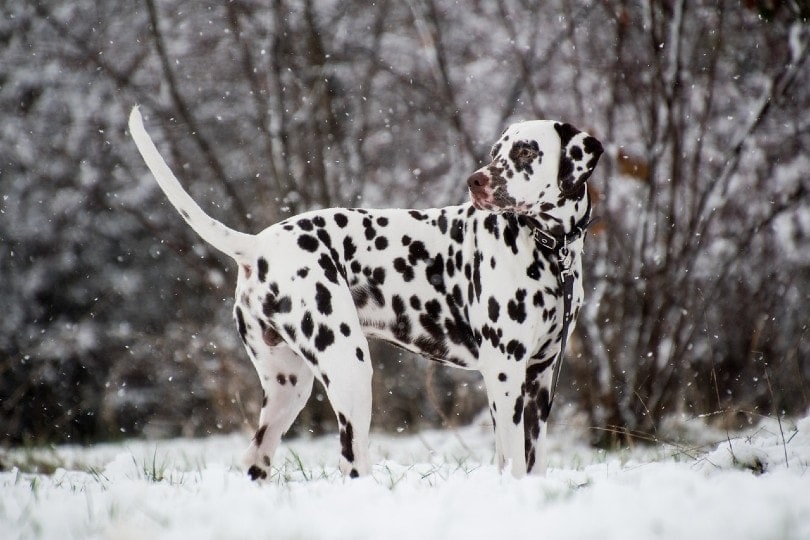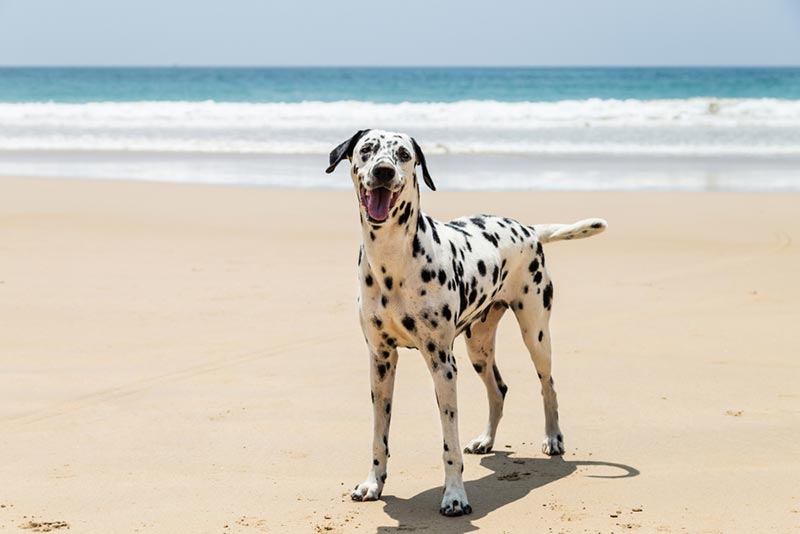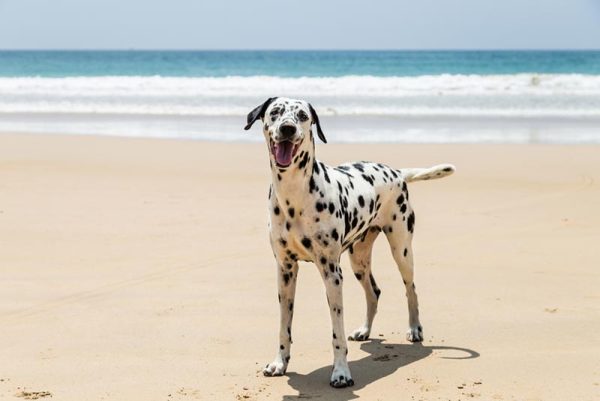Click Below to Skip Ahead
Dalmatians are popular dogs that rank in the top 50 dog breeds in the United States, according to the American Kennel Club. But how big do Dalmatians get? Dalmatians are considered medium-sized dogs, and the largest Dalmatians can be pretty stout. Dalmatians grow at an average rate, and puppies will often double in size in their first six months of life before.
Here is everything you need to know about the size and growth of a Dalmatian, including a growth chart, some FAQs, and how to accurately measure your Dalmatian for the best results.
Dalmatian Overview
The Dalmatian is a dog with murky origins. They emerged onto the pages of history roughly 500 years ago in the Dalmatia region (modern-day Croatia). From humble beginnings, the Dalmatian has grown to become one of the most recognizable mascot dogs in the modern world. From the local fire station to Disney’s 101 Dalmatians, these dogs have become iconic. They are best known for their classic shape and striking spots.
Adult Dalmatians will range anywhere from 45 pounds to 70 pounds in weight and stand between 19 and 24 inches tall. Dalmatians are expected to live for around 12 years. Females are typically smaller than males as the males pack more muscle onto their frames than females.
Dalmatians grow at an average rate and reach maturity between 12 and 18 months of age. Males will typically grow longer as they gain more weight after they have reached full height than females.

Dalmatian Size and Growth Chart
This chart covers a Dalmatian’s growth from 3 months of age until 14 months when they should be roughly fully grown. Most people will not bring puppies home before 2–3 months, and this chart is not meant for dog breeders (who should have access to their own information and growth charts if they are reputable).
This chart features some wide ranges in both weight and length, and that is because female Dalmatians are considerably smaller than male Dalmatians. That means that the low average can be much lower than the high average on a standard growth chart. This chart does not account for sex; it is a combined average.
This chart will help give you an idea of what size your Dalmatian should be as they age and grow. For the best results, chart your measurements on an empty growth chart and compare them with a standard Dalmatian growth chart.
| Age | Weight Range | Height Range |
| 3 Months | 15–25 pounds | 11–14 inches |
| 4 Months | 17–30 pounds | 15–18 inches |
| 5 Months | 22–40 pounds | 18–20 inches |
| 6 Months | 25–50 pounds | 20–24 inches |
| 9 Months | 30–60 pounds | 26–28 inches |
| 12 Months | 35–70 pounds | 28–33 inches |
| 14 months | 37–71 pounds | 28–33 inches |
When Does a Dalmatian Stop Growing?
Dalmatians typically stop growing around 18 months of age. They will attain their full adult height and length around 12 months before putting on some extra weight in muscle up to around 18 months. Most Dalmatians will be considered fully-grown at the 18-month mark.
Your Dalmatian’s height and weight around this time will be their healthy natural size and will be a good benchmark for future health considerations.

Factors Affecting the Size of Dalmatians
There are three main factors that will determine a Dalmatian’s final size. These factors are sex, genetics, and diet. There is a large size discrepancy between Dalmatians depending on their sex. Females are considerably smaller. In some cases, females can be roughly half the size of males in terms of weight. Females can also stand 5 to 6 inches shorter than males. That means that females will naturally be smaller than males in most cases.
Genetics also plays a big role. If a dog has small or scrawny parents, they will be more likely to be smaller or scrawnier themselves than dogs with large and robust parents. People know the value of genetics when breeding dogs because dogs are often selectively chosen for specific breeding pairings to create large dogs or specific breeds, colors, and so on.
Lastly, your dog’s diet can play a role. It is very important that your puppy gets enough nutrients during their formative months to fuel future growth. A puppy that does not get enough calories or nutrients is at risk of growing more slowly and reaching lower thresholds than dogs that get more than enough nutrients and calories. Make sure you feed your puppy appropriately in order to get the best growth potential possible.
Ideal Diet for Maintaining a Healthy Weight
An adult Dalmatian should eat 1.5 to 2 cups of food per day. Many experts suggest feeding your Dalmatians three meals per day rather than the traditional two. That would factor out to 1/2 to 2/3 cups of food per feeding. Dalmatians should eat high-quality formulated dog food in order to maintain a healthy weight and nutritional balance. You might want to consider feeding your puppy (less than 18 months old) a special puppy food to help boost their growth.
The best way to ensure a healthy weight is to avoid overfeeding your dog. If you give your Dalmatian three full meals per day, you need to avoid giving them treats or table scraps that will add extra calories and fat to their diets. Most dogs in the West are at risk of obesity rather than starvation.

How to Measure Your Dalmatian
Weight
There are two ways to measure your Dalmatian’s weight. First, you can put them on a scale. An at-home scale can work, but the scale at the veterinarian’s office will be more accurate. Getting a Dalmatian, especially a young one, to stand still on a scale long enough to get a measurement can be a challenge.
The other way to measure your Dalmatian’s weight is to weigh yourself while holding the dog. Weigh yourself alone first and note the weight. Then pick up your Dalmatian and weigh yourself again. Take the new weight and subtract the old weight from it to get your Dalmatian’s approximate weight. This method will not be as accurate as putting your Dalmatian on the scale, but it will give you a good approximation.
Height
When measuring a dog, you measure to their withers. The withers are the raised area near your dog’s shoulders just below the neck. Take a measuring tape and measure from the floor up to the withers. The withers should be the tallest part of your dog that is not a part of the head and neck area.
Length
There are multiple ways to measure the length of your Dalmatian. You have the simple length, which is the length of the back. You have the simple length plus the length to the tip of the nose. Then you have the total length, which is the tip of the nose to the tip of the tail.
For simple length, you measure from the withers to the rump or the area just before the tail starts. For nose length, you measure from the tip of the dog’s nose to the rump. For total length, you measure from the tip of the dog’s nose to the tip of the dog’s tail. It is easiest to use a flexible measuring tape while taking these measurements.

Conclusion
Dalmatians are medium-sized dogs with an average growth curve. Dalmatians will gain most of their size between 3 months and 9 months of age. Most Dalmatians are fully grown by 14 months, with 18 months being the latest that they will continue to grow.
Keeping your Dalmatian on a balanced and well-proportioned diet is key to maintaining a healthy weight and growth rate.
See also:
- Dalmatian Schnauzer Mix: Care, Pictures, Info, & Traits
- Doberman Dalmatian Mix: Pictures, Temperament & Traits
Featured Image Credit: Iren Key, Shutterstock












